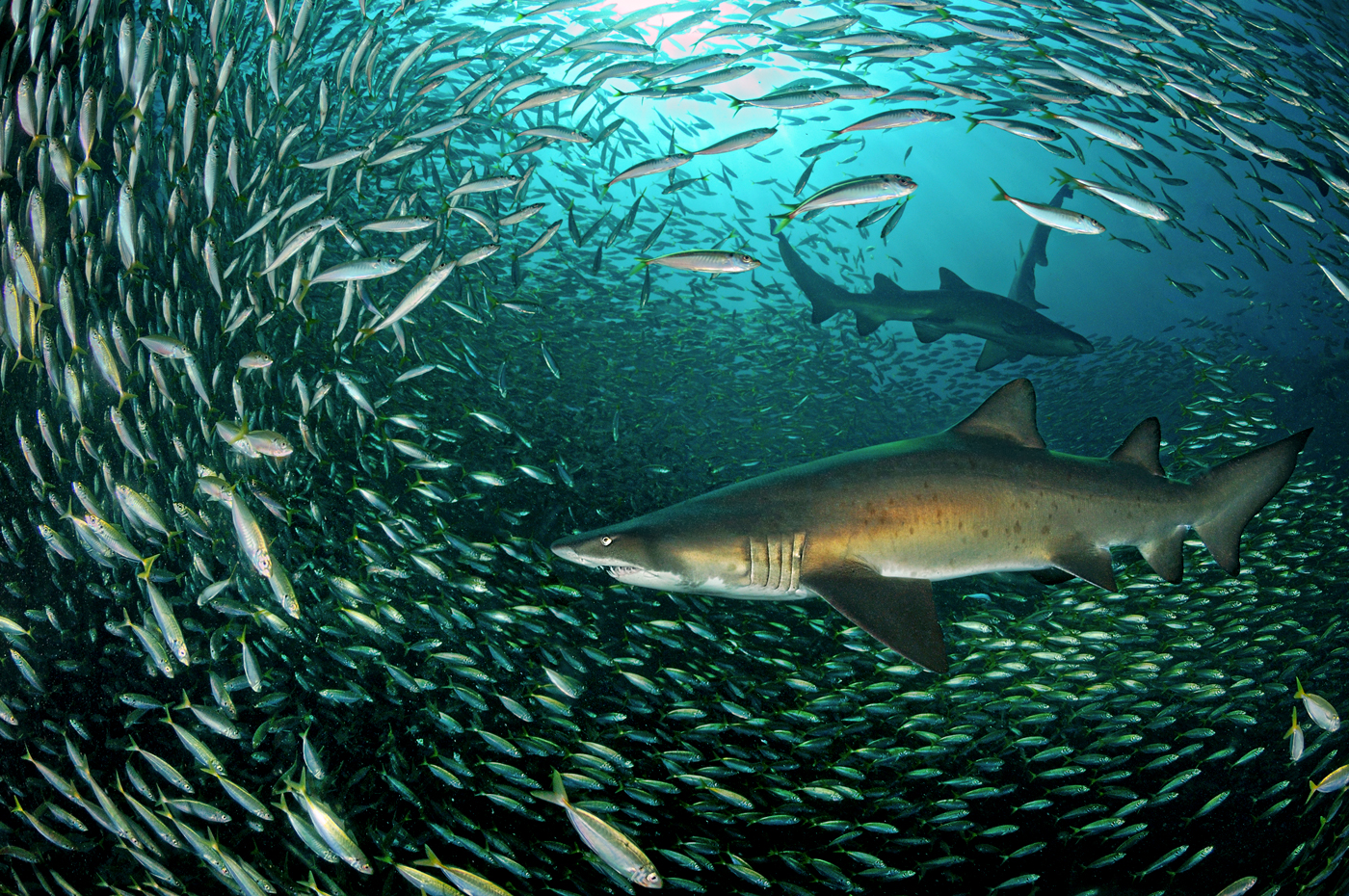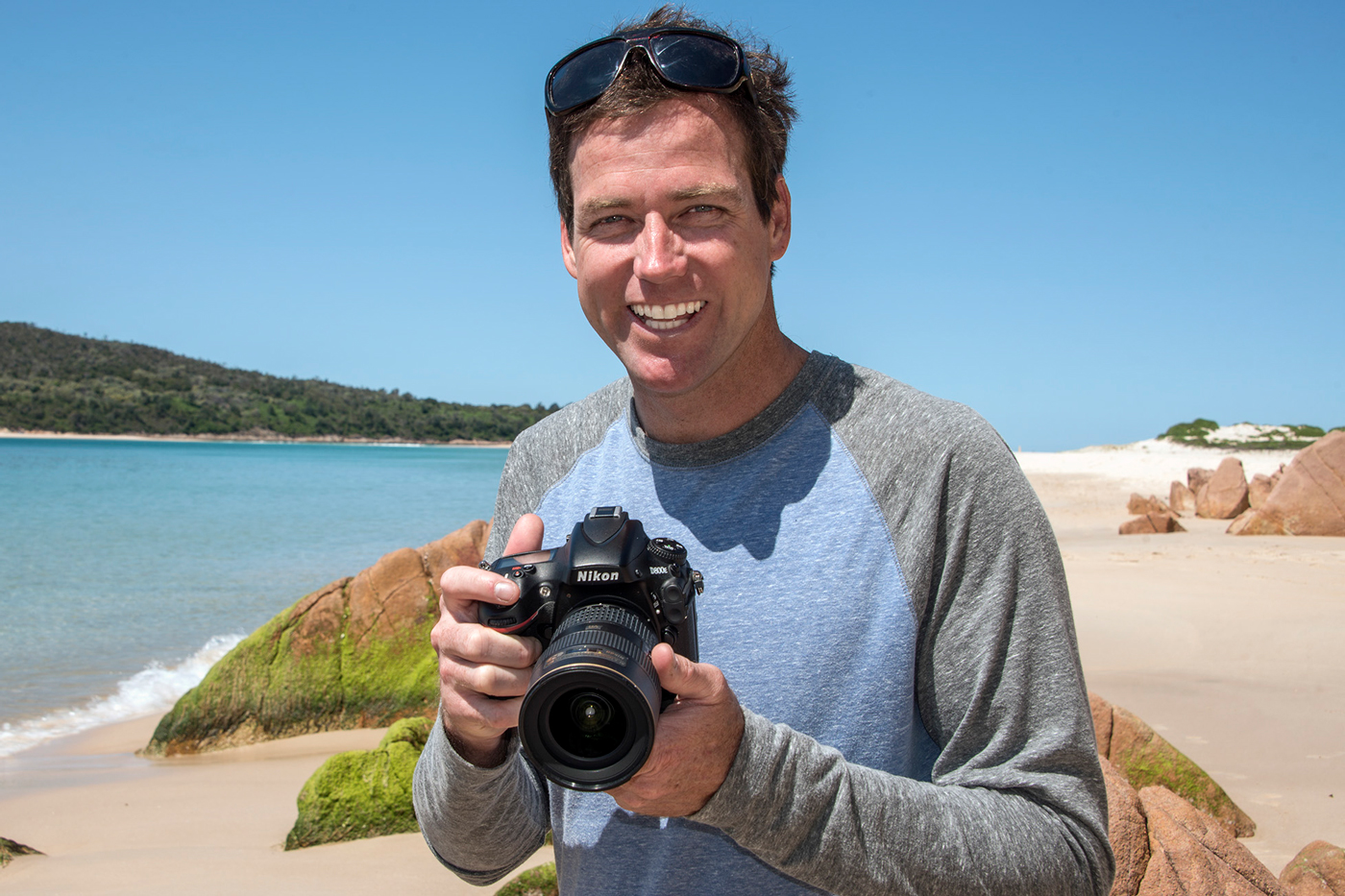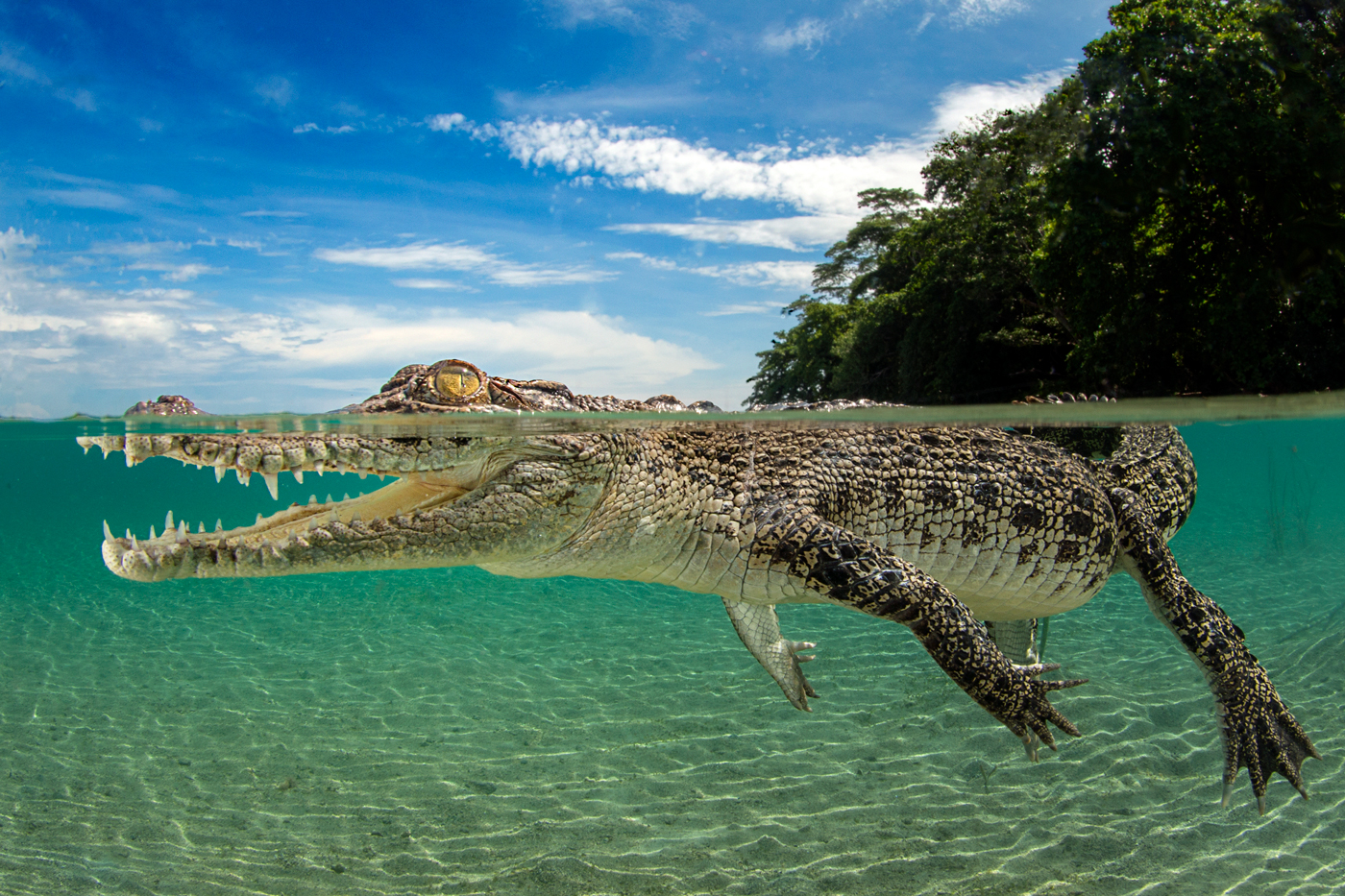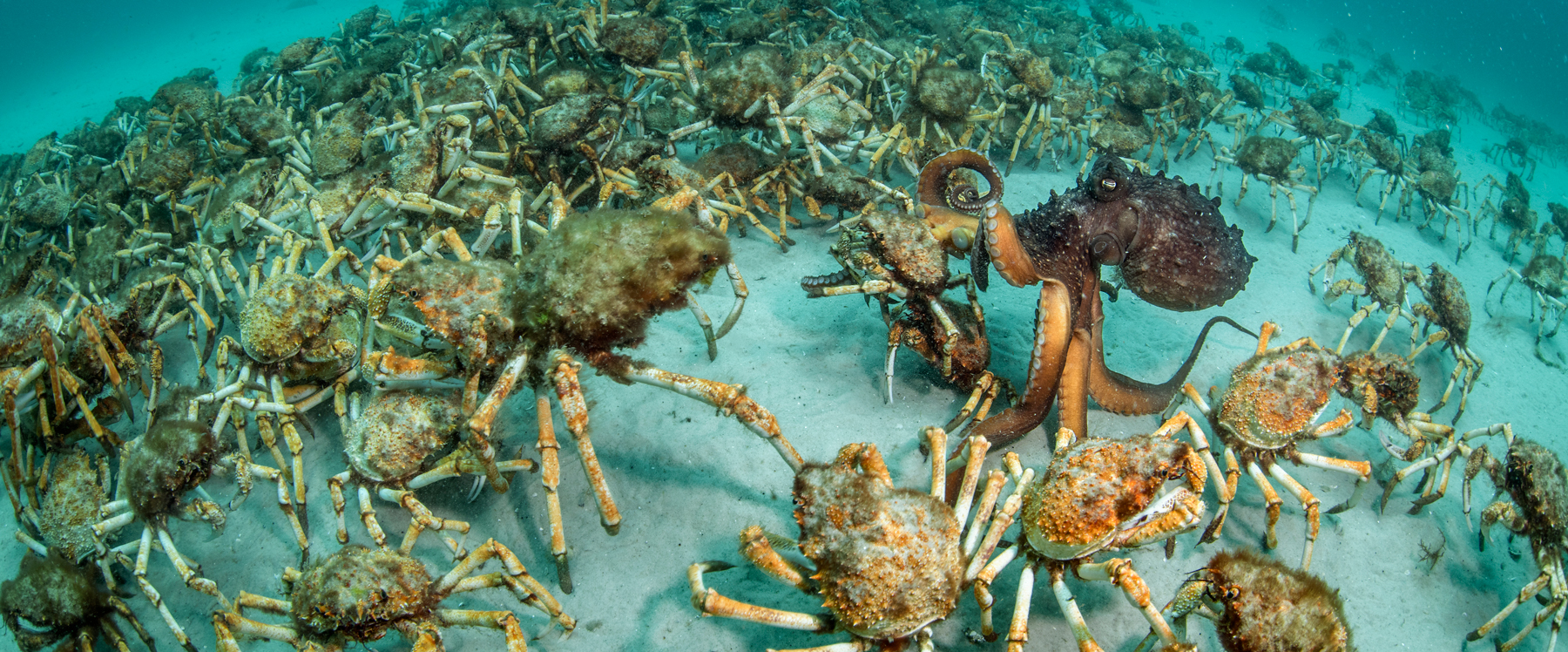Justin Gilligan – Beneath the Surface
In 2017 Justin Gilligan was named the Australian Geographic Nature Photographer of the Year for this image (above) of a Maori octopus preying upon spider crabs. The pelicans scrambling for fish on the cover of our Summer issue is also one of his images. As well as being an internationally acclaimed photographer, Justin is a trained marine scientist and loves to showcase those fascinating creatures we know so little about. We caught up with him to find out more about what goes on beneath the surface.
 Grey Nurse Sharks surrounded by a school of fish
Grey Nurse Sharks surrounded by a school of fish
Justin, do you remember when the underwater world first captivated you?
Absolutely. I was 14 years old and learnt to scuba dive in Port Stephens (my then hometown) with my dad. It was like being introduced to a whole new world and one that not many people knew about. We can all swim and surf but for me, being underwater is completely immersive…pardon the pun. You can fly around weightlessly, check out unusual creatures and watch the most beautiful light fall through the water. Fortunately, even after all these years that fascination keeps growing. I feel very lucky to have found something I’m so passionate about.
And did your interest in photography follow?
Yes, I got into it not long after learning to dive. Again, it was something I shared with dad. We’d halve a roll of film and take 18 photos each. Waiting to see how the images would turn out was like waiting for presents on Christmas Day.
You have an Honours Degree in marine science and your images and articles have been published around the world. How do manage to combine both fields so seamlessly?
They really do go hand-in-hand. Marine science is a really good way to record information and facts for those within the industry, but my photography can be very effective in communicating to a much broader audience.

What’s so special about creatures of the ocean?
They are largely unseen. A lot of the time they go unnoticed which means they don’t have their own voice. People often don’t know their stories or haven’t seen these creatures, so I have this wonderful opportunity to shed some light and share untold stories.
Tell us about your award-winning shot of the octopus and the spider crabs?
It was one of those serendipitous moments that happen so rarely in nature photography. I was covering some marine research work off Maria Island on the east coast of Tasmania. We were documenting an artificial reef experiment on kelp when totally unexpectedly, a group of spider crabs about the size of a football field wandered through the experiment. The octopus, as excited as a kid in a candy store, followed their every move. The unexpected appearance of the crabs reinforced how little we know about the marine environment and how important that work was.
For those Cb readers who prefer to stay above the surface, explain what they’re missing…
There is the most amazing light and you get to witness an incredible underwater seascape. It’s magical to see those light rays coming through the water like car headlights on a foggy highway. Even murky green water can create a stunning backdrop to a colourful cast of bizarre creatures.
 A young Saltwater Crocodile
A young Saltwater Crocodile
Work takes you to some spectacular places…
Yes, part of winning the Australian Geographic prize was a month in the subantarctic and Antarctica. Macquarie Island was unbelievable. Western Australia’s Shark Bay and Ningaloo Reef are breathtaking locations and I’m keen to spend more time there. I love being able to walk off the shore and be straight on the reef.
You’re based on the south coast of NSW and often get back to see family in Port Macquarie.
I love getting back to the north coast. Fish Rock Cave at South West Rocks is one of my favourite places in the world to dive and of course the Solitary Islands Marine Park on the Coffs Coast has the perfect mix of warm and cold-water species. As someone specialising in underwater photography, living on the coast means that I get to spend more time on or in the water which increases my chances of capturing something unusual.
What’s next in store for you?
In Cape York the Traditional Owners are doing tremendous conservation work demonstrating their link to sea country which I’m very keen to delve into. I’d also like more time on the Great Barrier Reef as well as on the temperate reefs off southern Australia which are full of surprises. I want to focus most of my work here in Australia. We have so much diversity in our marine world from subantarctic waters all the way to tropical coral reefs, so I’d like to explore more of our own backyard.
Of the countless photographs you’ve taken over the years, do you have a favourite?
Hmm, maybe the very next photograph I’ll take…there are always more stories to tell.
Find out more at www.justingilligan.com or follow Justin on Instagram @justingilligan


